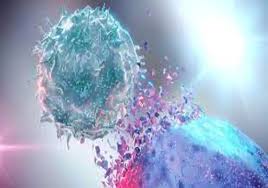Introduction
Cancer remains one of the most formidable health challenges globally, affecting millions of lives each year. Identifying the factors that contribute to cancer risk is essential for developing effective prevention and treatment strategies. In recent years, researchers have been uncovering new elements that increase the risk of cancer, shedding light on previously unknown causes and providing valuable insights for public health efforts.
What is Cancer?
Cancer is a complex disease characterized by the uncontrolled growth and spread of abnormal cells in the body. It can affect virtually any part of the body, disrupting normal bodily functions and posing significant health risks. From lung cancer to breast cancer, the disease manifests in various forms, each with its unique challenges and treatment approaches.
Importance of Identifying New Elements
The identification of new elements contributing to cancer risk is paramount for several reasons. Firstly, it allows for a deeper understanding of the mechanisms underlying cancer development, paving the way for targeted interventions and therapies. Secondly, it enables proactive measures to mitigate exposure to these elements, potentially reducing the incidence of cancer in at-risk populations. Moreover, identifying new cancer-causing elements can inform public health policies aimed at minimizing environmental and occupational hazards.
Discovery Process
The process of identifying new elements increasing cancer risk often involves rigorous scientific inquiry and experimentation. Researchers employ a range of techniques, including epidemiological studies, laboratory experiments, and data analysis, to identify potential carcinogens and their mechanisms of action. This multidisciplinary approach enables scientists to uncover hidden risks and validate findings through peer-reviewed research.
The Role of Research
Research plays a pivotal role in identifying new elements that contribute to cancer risk. By conducting comprehensive studies and experiments, scientists can elucidate the link between specific substances or environmental factors and cancer development. This knowledge forms the foundation for evidence-based recommendations and interventions aimed at reducing cancer incidence and improving outcomes for affected individuals.
Types of New Elements
Recent advancements in cancer research have led to the discovery of various elements that increase cancer risk. These include environmental pollutants, such as air and water contaminants, as well as dietary factors and lifestyle choices. Additionally, genetic predispositions and gene-environment interactions play a significant role in determining individual susceptibility to cancer-causing elements.
Chemical Exposures
Exposure to certain chemicals has been linked to an increased risk of cancer. Industrial chemicals, pesticides, and household pollutants are among the substances that can pose carcinogenic hazards to human health. Occupational exposure to these chemicals, as well as environmental contamination, can contribute to elevated cancer risks in exposed populations.
Environmental Factors
Environmental factors, such as air and water pollution, radiation, and climate change, can influence cancer risk at the population level. Contaminants released into the environment through industrial activities and transportation can contaminate food and water sources, exposing individuals to potential carcinogens. Mitigating environmental risks requires concerted efforts at the local, national, and global levels to reduce pollution and promote sustainable practices.
Genetic Influences
While environmental factors play a significant role in cancer risk, genetic predispositions also contribute to individual susceptibility to the disease. Certain gene mutations and inherited traits can increase the likelihood of developing specific types of cancer, such as breast or colon cancer. Genetic testing and counseling can help identify individuals at higher risk and inform personalized prevention and screening strategies.
Preventive Measures
Preventing cancer involves a multifaceted approach that addresses both modifiable risk factors and genetic predispositions. Lifestyle modifications, such as maintaining a healthy diet, regular exercise, and avoiding tobacco and excessive alcohol consumption, can lower overall cancer risk. Additionally, reducing exposure to environmental pollutants and occupational hazards can help minimize cancer risks in susceptible populations.
Early Detection
Early detection of cancer is crucial for improving treatment outcomes and survival rates. Screening tests and diagnostic procedures can detect cancer at its earliest stages when it is most treatable. Routine screenings for breast, cervical, colorectal, and prostate cancers, among others, can identify abnormalities before symptoms develop, enabling timely intervention and better prognosis.
Public Health Implications
The identification of new elements increasing cancer risk has significant implications for public health policy and practice. By prioritizing cancer prevention and control efforts, policymakers can implement regulations and initiatives to reduce exposure to carcinogens and promote healthy behaviors. Public education campaigns and community outreach efforts can raise awareness about cancer risks and empower individuals to make informed decisions about their health.
Future Directions
As cancer research continues to advance, future efforts will focus on identifying novel cancer risks and developing targeted interventions. Collaborative research initiatives and technological innovations will drive progress in cancer prevention, diagnosis, and treatment, ultimately improving outcomes for patients and reducing the global burden of cancer.
In conclusion, the identification of new elements increasing cancer risk is a critical endeavor with far-reaching implications for public health and scientific research. By understanding the complex interplay of environmental, genetic, and lifestyle factors in cancer development, we can work towards reducing cancer incidence and improving outcomes for affected individuals. Through ongoing research, collaboration, and public awareness efforts, we can strive towards a future where cancer is no longer a widespread health threat.
FAQs
- How are new cancer-causing elements identified?
- New cancer-causing elements are identified through various research methods, including epidemiological studies, laboratory experiments, and data analysis.
- What are some common environmental factors linked to cancer risk?
- Common environmental factors linked to cancer risk include air and water pollution, radiation exposure, and chemical contaminants.
- Can genetic testing predict cancer risk?
- Genetic testing can identify certain gene mutations and inherited traits that may increase the risk of developing specific types of cancer.
- What preventive measures can individuals take to reduce cancer risk?
- Individuals can reduce their cancer risk by adopting healthy lifestyle habits, avoiding tobacco and excessive alcohol consumption, and minimizing exposure to environmental pollutants.
- Why is early detection important in cancer treatment?
- Early detection of cancer allows for timely intervention and treatment, which can improve outcomes and increase the likelihood of successful recovery.




